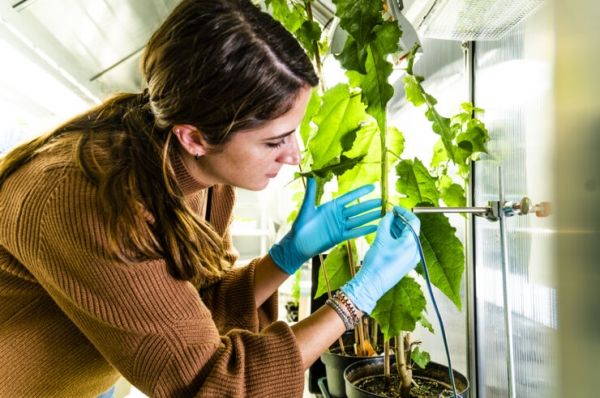Researchers at Linköping University have developed biosensors that make it possible to monitor sugar levels in real time deep in the plant tissues – something that has previously been impossible. The information from the sensors may help agriculture to adapt production as the world faces climate change.
The primary source of nutrition for most of the Earth’s population is mainly plants, which are also the foundation of the complete ecosystem on which we all depend. Global population is rising, and rapid climate change is at the same time changing the conditions for crop cultivation and agriculture.
“We will have to secure our food supply in the coming decades. And we must do this using the same, or even fewer, resources as today. This is why it is important to understand how plants react to changes in the environment and how they adapt”, says Eleni Stavrinidou, associate professor in the Laboratory of Organic Electronics, Department of Science and Technology at Linköping University.
Read more at Linköping University
Photo: Chiara Diacci, PhD student at the Laboratory of Organic Electronics and first author of the paper, inserts the sensor in the young tree. CREDIT: THOR BALKHED


